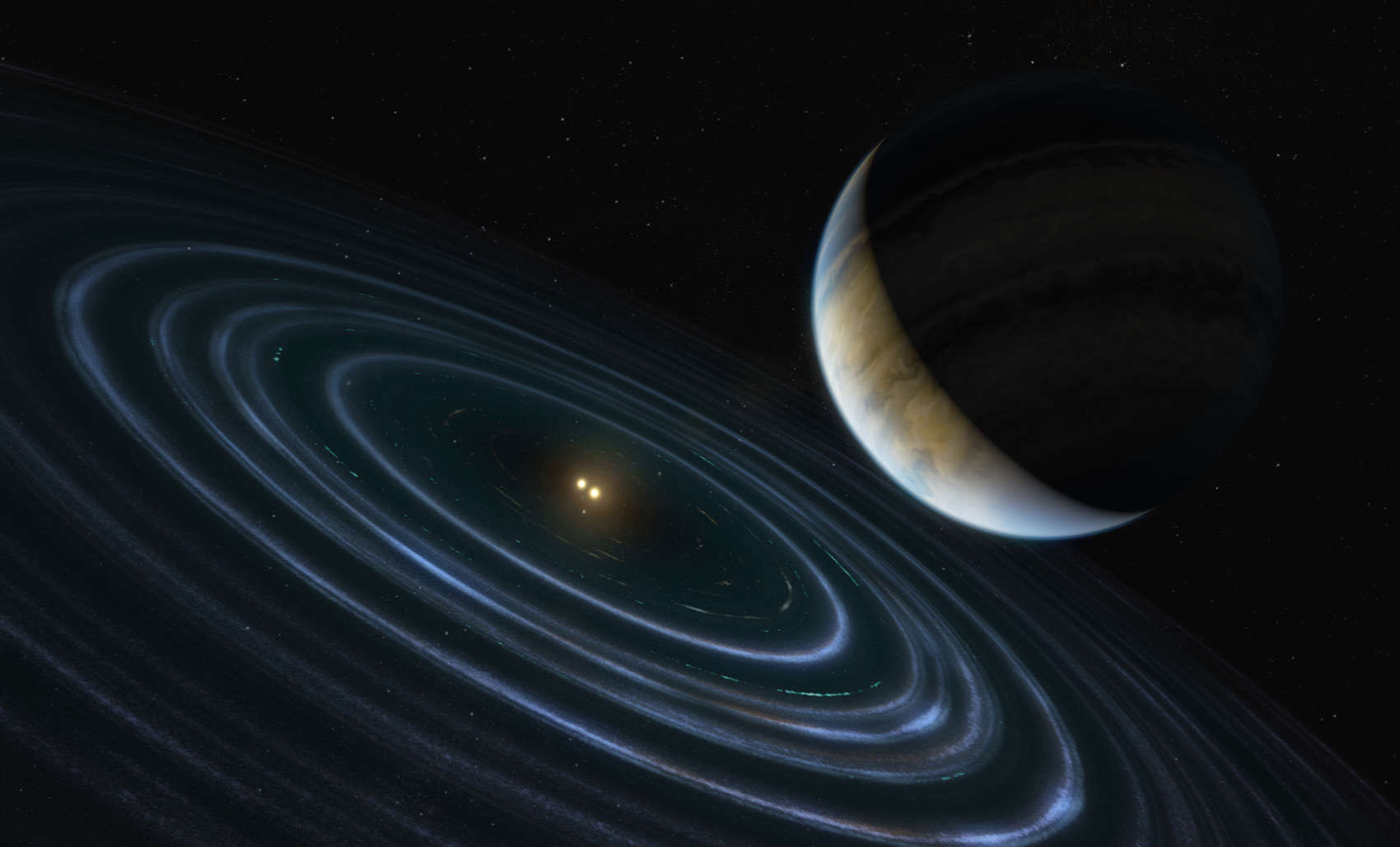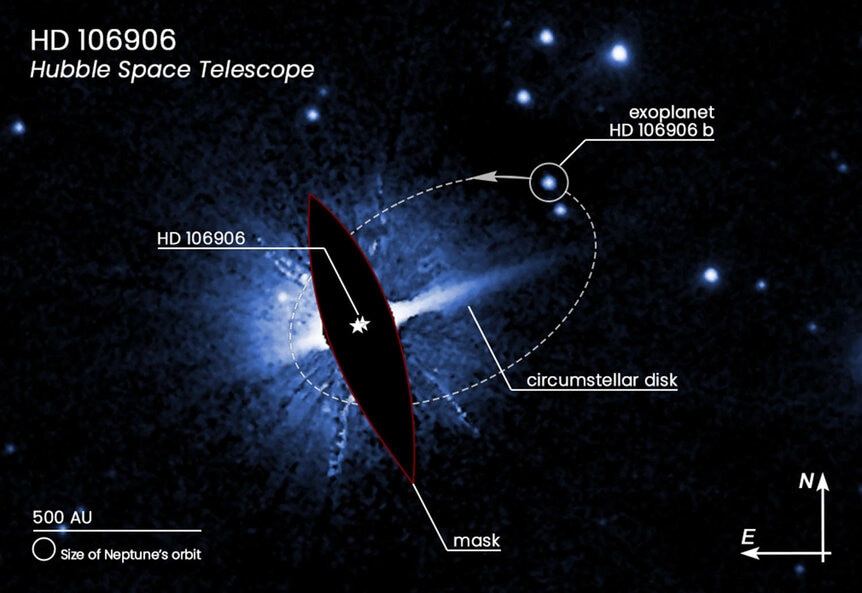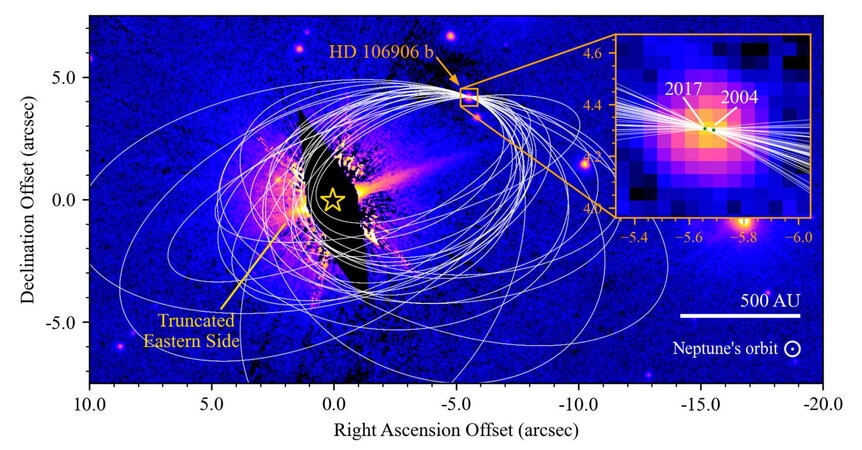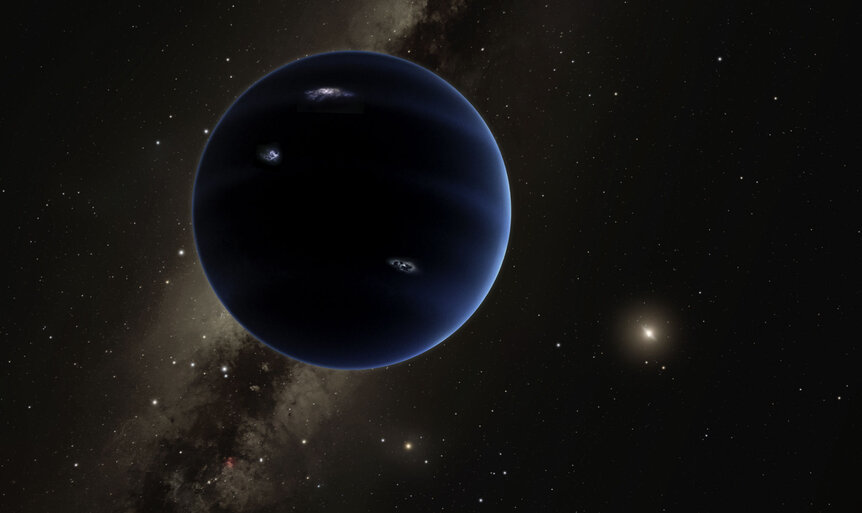Create a free profile to get unlimited access to exclusive videos, sweepstakes, and more!
Does Planet Nine exist? An alien world 300 light years away gives hope

It's weird to think that an exoplanet over 3 quadrillion kilometers away may indirectly support the existence of a Planet Nine deep in the outer parts of our own solar system, but here we are. HD 106906b is an oddball for sure, but the fact that it's there at all means our own system might have something like it.
HD 106906 is a binary system, two stars about 1.3 times the mass of the Sun each circling each other on a 49-day orbit. They're about 340 light years from Earth, and they're young, only about 15 million years old (at 4.6 billion, our Sun is 300 times older). So young, in fact, that a debris disk of planet-making material still surrounds them, leftover from the stars' birth. Gaps in the disk indicate there may be planets orbiting up to about 7.5 billion kilometers from the stars, making its system about twice as wide as our own.
But. In 2014 astronomers announced they found a planet orbiting the stars, seen by direct imaging: Literally, you can see it in an image of the system. Called HD 106906b, it's beefy at 11 times the mass of Jupiter, and is currently about 110 billion kilometers out from the stars.
That's a very long way; 25 times farther out than Neptune orbits the Sun! Not only that, in the images you can clearly see that its position does not align with the disk, which is very weird. If it orbited in the same plane as the other planets, extending a line out from the disk should point to the planet. It does not, so its orbit must be significantly tilted.
Now, using Hubble Space Telescope observations spanning 14 years, astronomers have been able to see the planet physically moving, allowing them to get an estimate of its orbit. And yeah, it's weird.
The planet appears to have moved by an angle of 32 milliarcseconds* between images taken on 2004 and 2017. That's a tiny amount, equivalent to the apparent size of a US quarter from 2,000 kilometers away! I'm impressed they were able to measure that. Still, that means the planet has traveled about 500 million kilometers along its orbit.
What they found is that the orbit is highly elliptical, taking the planet as close in as 70 billion km and as far out as 180 billion. The orbital period (the planet's "year") is something like 15,000 years, and it is indeed tilted by over 50° from the orbit of that inner disk.
In fact, this could explain an oddity about the disk. On one side of the stars it's thin and stretches quite a distance out, but on the other side it's thicker and is cut off at a much closer distance to the star. The planet itself could explain that; as it swings in closer to the stars once per orbit it could gravitationally tug on the disk, shortening it and changing its shape.
This part is very cool: It's in the outer reaches of that disk where large icy bodies form, what we call Trans-Neptunian Objects (or TNOs) in our own solar system. These range from small objects up to ones as big as Pluto, a couple of thousand kilometers across.
We expect that very distant TNOs should be scattered every which way, with orbits tilted randomly. However, over the years astronomers have found that many of them have their orbits aligned in a way you don't expect by chance, but do expect if there's a massive planet orbiting well past Neptune, tugging on them and changing their orbits. This planet is theorized to exist, but hasn't been spotted yet, so for now we call it Planet Nine.
There's still some controversy over whether Planet Nine exists or not, but HD 106906b lends credence to its existence. The exoplanet's orbital size, shape, and tilt are all similar to what's theorized for Planet Nine, and the fact that the HD 106906 disk is truncated shows that it very well can re-align TNO orbits as well.
The question remains, how did it get on such a weird orbit? The astronomers studying HD 106906b's orbit speculate that it formed much closer in to the stars. The disk surrounding the stars puts a kind of drag on the planet, stealing orbital energy from it, so it would've dropped toward the stars (we call this orbital migration, and think it's common, occurring in every forming planetary system). When it got close enough to the binary stars, their changing gravity (due to the stars orbiting each other) could've flung it into a highly elliptical orbit. Then, a passing star tugging on the planet could've stabilized the orbit, keeping it well away from the inner system.
If Planet Nine exists, it's hard to say how it got on its orbit, but it could've been in a similar way. If it got closer to Jupiter, the larger planet would've slingshot it away, and again a passing star could've stabilized it. It's not clear if this is the case or not — we have to find the planet first, of course — but it's plausible. And it could've happened very early on in the solar system's history, since HD 106906b is only 15 million years old.
What all this is telling us is that the Universe is a pretty strange place, and given enough building material and time, things that seem unusual may in fact be commonplace. I find that not only comforting, but exhilarating: What else is out there waiting to be discovered, something we haven't thought of yet because the Universe has more imagination than we do?
*1 milliarcsecond is 1/1000th of an arcsecond, which is itself 1/3600th of a degree.































